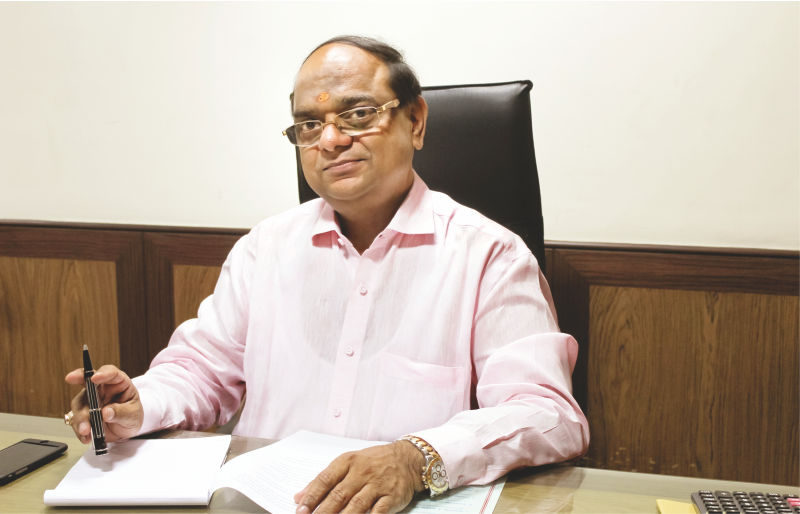With the present volume of 200,000 tonne per annum, Bansal Wire Industries Ltd. is ready to expand it by 50 percent and mulling over to add some niche steel wire products that are hitherto imported from China.

Bansal Wire Industries Ltd. is well-identified for catering to varied industries with an assorted gamut of steel wires. Under the flagship company of Bansal Group, this wire trading company has come a long way since its inception in 1938. Bansal Wire Industries Ltd. possesses a vital understanding of changing market needs along with a strong commitment to serve nothing but the best.
In continuation to its efforts for diversification of the portfolio, Bansal Wire is the third largest steel wire producers in India – having six manufacturing facilities in Delhi & NCR. It is all set to increase the volume by 50-60 percent and manufacture new products which are presently imported from China and other foreign countries. Bansal Wires has decided to start manufacturing small yet regular household products such as scrubbers, steel wire mesh, alloy wire mesh, etc. which has very low production in India.
Recently, Mr. Arun Gupta, Managing Director of Bansal Wire Industries Ltd. in an interview with Wire & Cable India, threw light on varied issues concerning both the company and the industry as a whole.
Wire & Cable India: We have been told that Bansal Wires is contemplating on adding some products to its already wide portfolio. Is that true?
Arun Gupta: Yes, It is very much true! We are not only planning some new products, but also are set to increase the capacities for all existing products. There are many such small steel wire products which are not being produced in India on any considerable scale, and which are imported from other countries, mainly China. If, say, there is demand of 1000 tonne of such products, only 50-100 tonne of requirement is met by our domestic production.
We, therefore, have selected few of such products to develop ourselves; all are small, yet niche products such as wires for scrubber, wire mesh, alloy wire mesh, and other such steel wire items frequently found in households. Alloy wire mesh was not at all being manufactured in India, i.e. a 100 percent imported item. If we start making such products here in India and if favored by the Govt.’s policy, not only would it act as import substitution, but would open a new market for us too. Moreover, others will also follow the suit and put facilities for such niche products.
WCI: Any plan as regards to capacity expansion? What are you going to do in terms of technology upgradation for the new products you said you would introduce?
AG: As I said, we are going to increase the volume for all the existing products considerably. Bansal Wires as of now does not make certain kinds of wires and it intends to start manufacturing those soon in future. To be specific, in 3-4 years time, we expect at least 50-60 percent increase in our present volume.
As regards technology upgradation, we have plans to put up state-of-the-art wire drawing equipments having better controls to meet the quality requirements of new products development. Further, we are upgrading our existing facilities also.
WCI: On making the steel wire products in India, you added a clause ‘if favored by the Govt.’s policy? Were you hinting towards dumping from China?
AG: Yes, to that and to the imposition of minimum import price (MIP). The imposition of MIP was needed; however the pricing was entirely out of place. It is hurting the user industry. MIP for steel wire rod is somewhat hovering in the range of USD 450-455, which is not all good for the industries who used these rods as raw material. Further, no MIP is imposed on wires.
Now, the import of wire rod has somewhat stopped, but the import of finished steel wire products has started coming in, in place of wire rods as there is no incentive for many in importing the wire rods and making goods from it; the finished goods are now a lot cheaper. In my view, there should have been a proper pricing mechanism in place in order to provide long term benefits to both steel manufacturers and steel product manufacturers. I am also of the view that why the Govt. not imposes the MIP on entire chain of steel and steel products if it really wants to fight against dumping from China, or from somewhere else.
WCI: What initiatives do you feel should be taken, either on association or individual level, to convince the Govt. either to instill a compensatory mechanism to make up for the increased raw material price or to come up with a more balanced MIP mechanism favoring all?
AG: See, the MIP conditions are valid for six months from the date of the notification (February five) or until further orders, whichever is earlier. We are hoping that it would be scrapped after its tenure and would not be imposed again. If imposed again, we should jointly make efforts to impress upon the Government to impose at a very reasonable price level.
WCI: Do you want to say that stable and reasonable pricing of steel is crucial for the growth of the steel wire industry and maintaining that is a challenge?
AG: Yes, exactly. When you are able to procure raw material at right prices and in right quantities, the prices of the finished goods would also be reasonable, which not only would spur the per capita consumption in the country, but result in the growth of the industry with bigger investments in new capacities and technologies. For instance, one may easily gauge the effect of price by way of MIP imposed by the Govt. prior to which the industry witnessed a noticeable volume growth, which is now arrested because of unreasonably high import prices of steel.
Per capita steel consumption in India is very low and has been a persistent challenge for the industry for so long. Unreasonable raw material prices are one of the culprits for such very low steel consumption in the country. The Govt. must put in place the right price mechanism to stabilize the prices of steel at such level which favors both steel producer and steel user industries.
WCI: What business segments or applications do you foresee as potentially profitable in times to come?
AG: As per me, infrastructure and automotive sectors are going to give us tremendous opportunities in times to come. Infrastructure has both the cabling and other kind of steel wire requirements where our products find huge applications. Likewise, as I said, we have already registered a presence in the automotive OEM market, which only is going to give so much more in future as India is soon to emerge as an automobile hub.
WCI: You primarily cater to domestic market; do you have any plan to show your presence in international market?
AG: The plan as regards to export has always been there and we have gradually working on this for a while. We cater to domestic market in a big way. But for export, it is not so attractive proposition for us due to being away from ports or any coastal area.
However, we are planning to come up with a facility near one of the ports which favors transportation and shipments to countries we want to export to. This facility would largely be dedicated to our exports requirements. We wish to start the plant with initial capacity of 60,000-65,000 tonnes and we hope to start working within 1.5-2 years time.
WCI: Do you wish to add something?
AG: I would reiterate that right Govt. strategy on pricing is critical to the growth of steel user industry. If that happens, India may be able to use a significant ratio of steel goods domestically and be able to substitute a large amount of imports.




